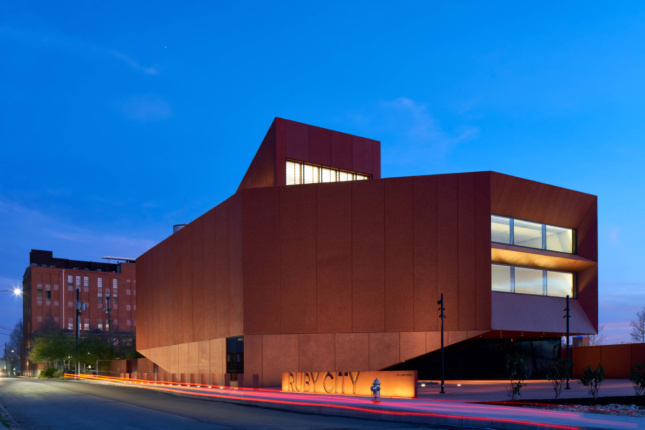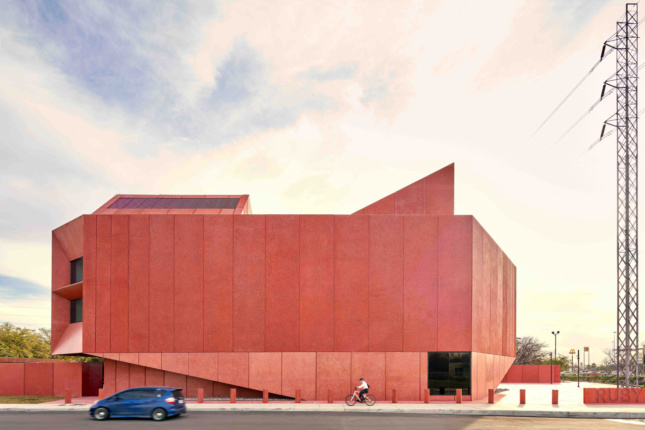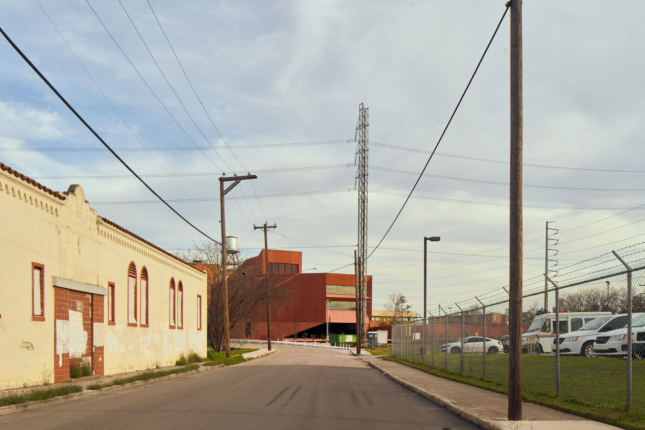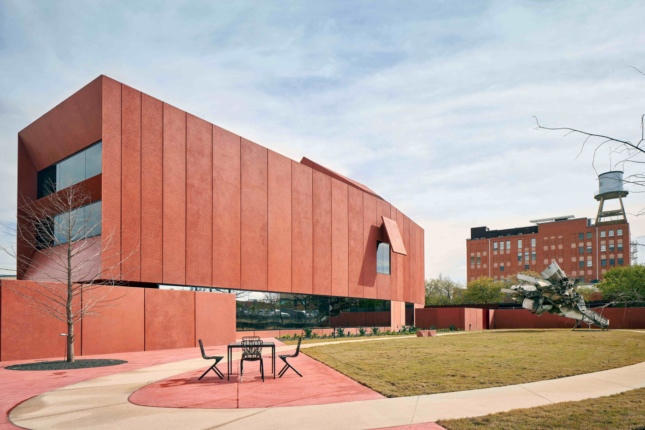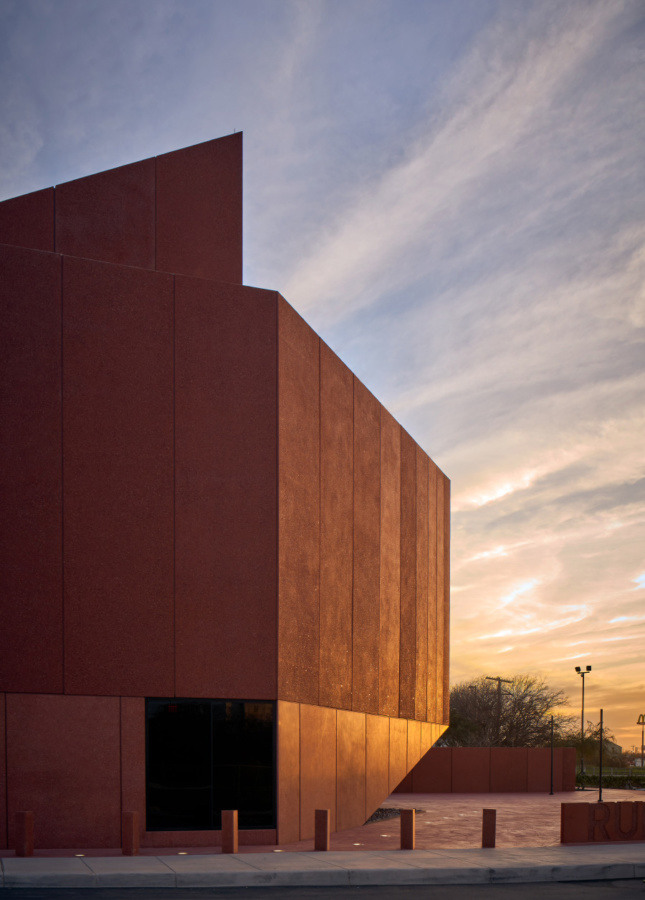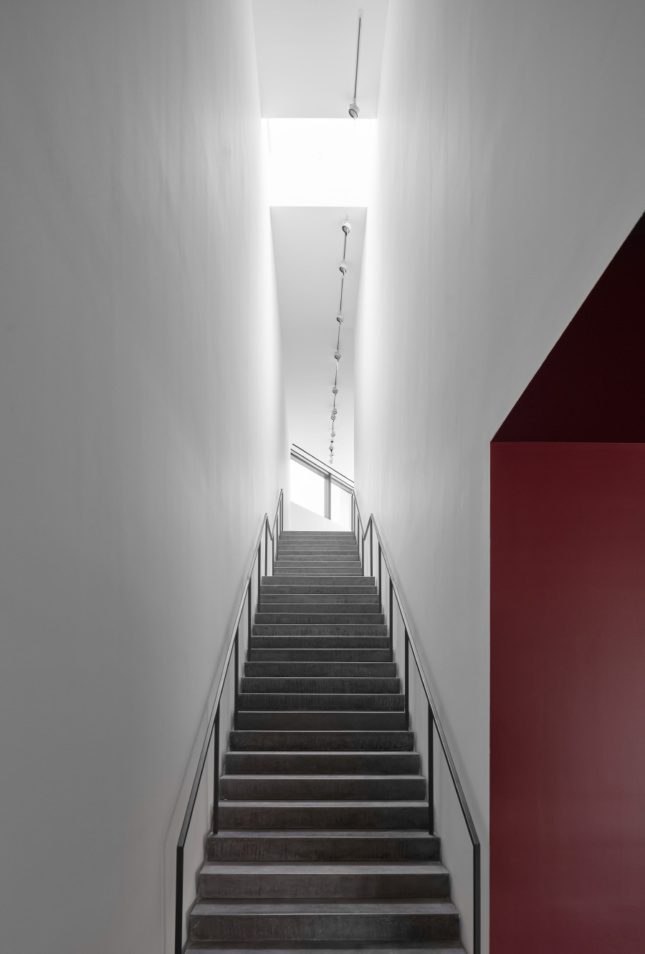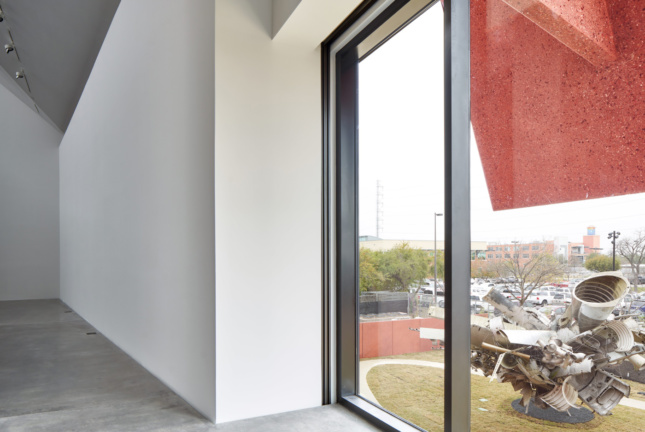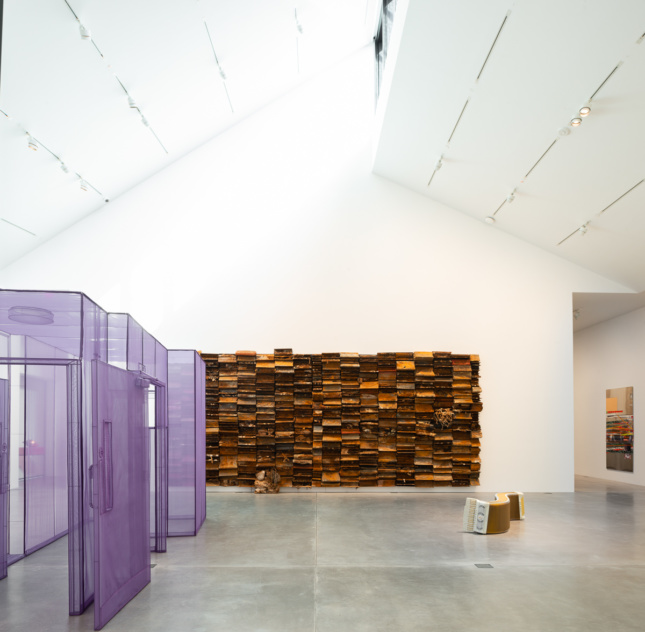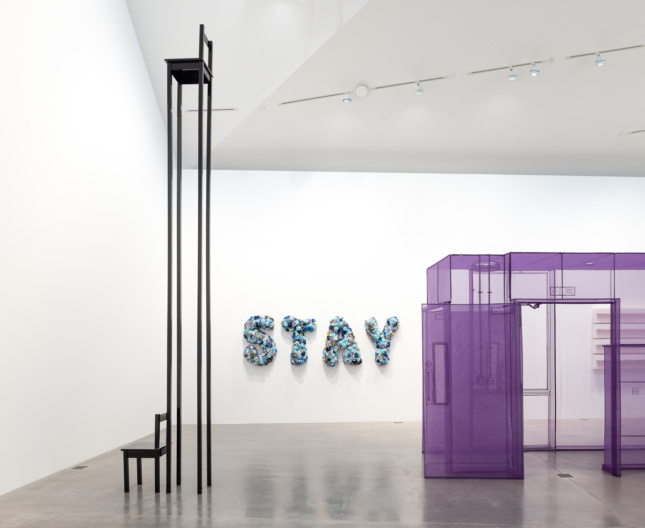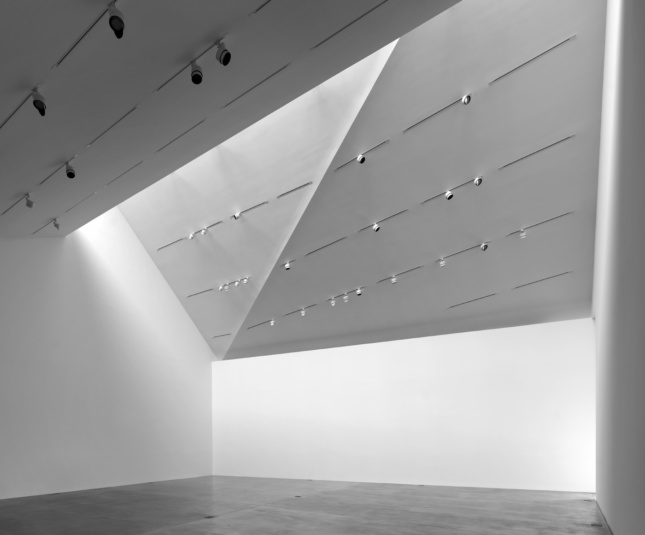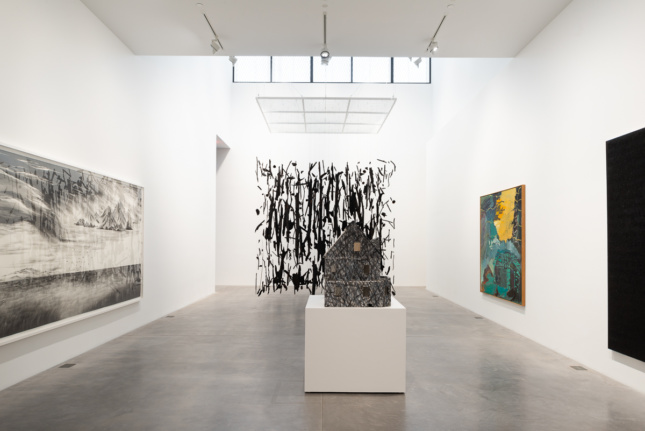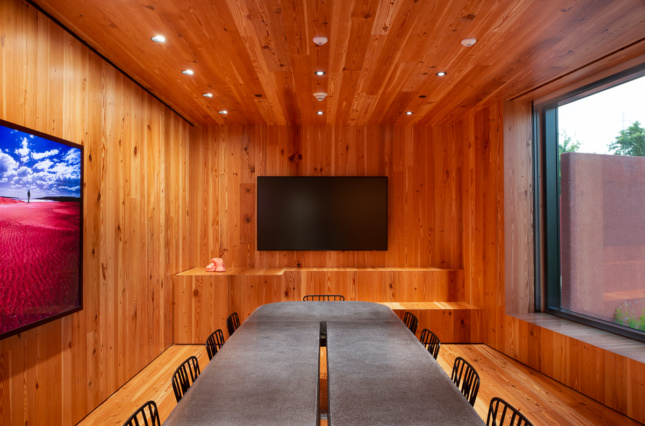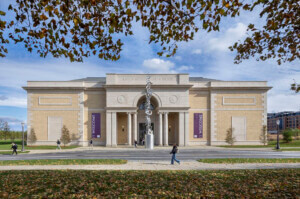Ruby City is an oddity. Sited in a formerly industrial zone south of Downtown San Antonio dotted with islands of gas stations and fast food signs, and abutting a neighborhood known for its artist community, the 14,000-square-foot contemporary art center designed by Adjaye Associates is, by nature of its history, location, and design, a study in contradictions.
In 2007, the late Linda Pace, daughter of salsa and hot sauce magnate David Pace, reached out to David Adjaye with a sketch of Ruby City, which she envisioned as a center to present her then 500-piece-strong art collection to the public. An artist herself, Pace would draw her dreams after waking up and have these sketches fabricated into sculptures (the institution’s inaugural exhibition includes a work by Pace that renders the word STAY in fake blue flowers). Pace’s idea for Ruby City came during one of these nocturnal fantasias, when she envisaged a complex of towers and minarets in blazing red. Pace met Adjaye shortly before her death from breast cancer to discuss the project, and 12 years later, the building is finally opening.
The result is far from a collection of windowless spires but is still, as Adjaye told Texas Monthly, “very shy.” On approach, my initial impression was of a thick-shelled aardvark or beetle, the building’s heavy stone massing and brilliant red color standing in stark contrast to the sea of parking lots nearby. The red, terrazzo-like concrete used to form the facade has been rightly celebrated by critics ahead of the building’s opening; the material was fabricated by Pretecsa, a company based outside of Mexico City, and is also strategically deployed in custom curbside bollards and benches in the sculpture garden. In person, its rich color is true to the photos.
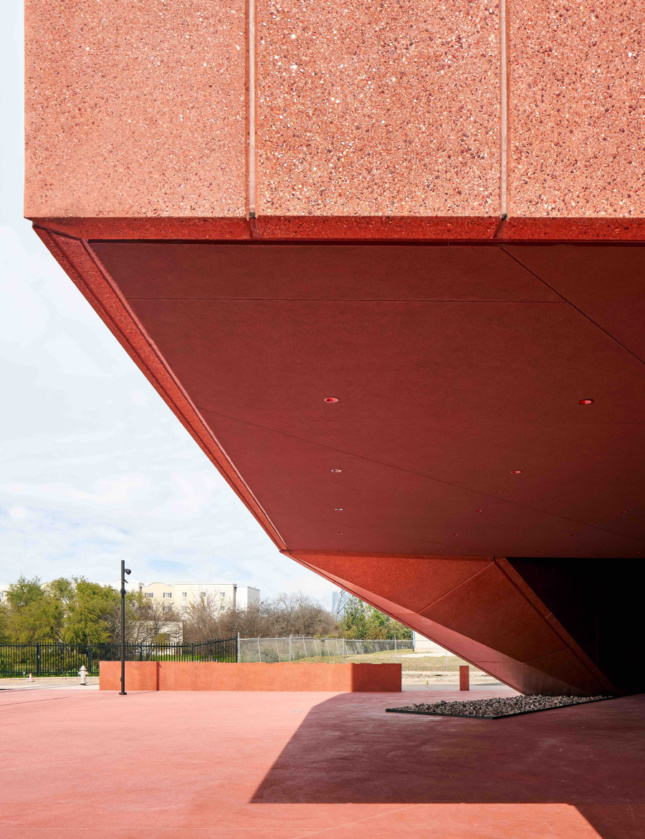
Despite the fortress-like street presence, Adjaye has tried to make Ruby City feel inviting. The way the entrance canopy gently lifts from the building and cantilevers over the plaza like the opening of a cave lends some much-needed lightness to the massing, a touch that’s mirrored on the reverse side, over the parking lot.
Part of the inward-facing design is practical, as anything built in southern Texas must defer to the elements. To combat the harsh sun, two layers of curtains, one blackout and one shade, have been installed across the windows in all three of the building’s central gallery spaces; the building will be open only four days a week, with the blackout curtains otherwise drawn to protect the collection. Ruby-tinted steel grates, resembling crenelated brick from the ground, have been installed across every skylight to protect against monster hail.
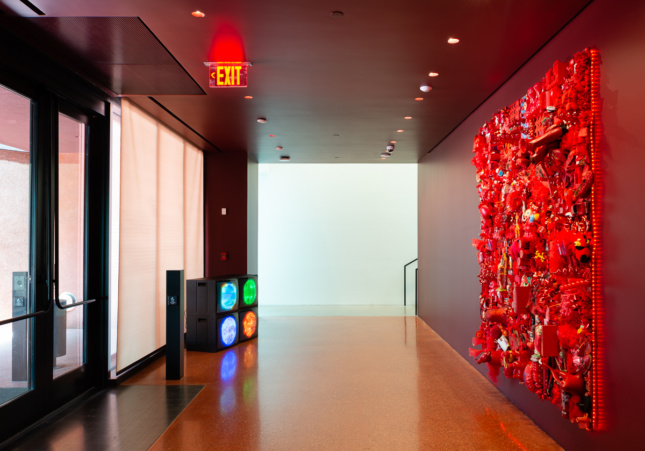
Once inside, it becomes clear that Adjaye Associates and executive architects Alamo Architects took great strides to enliven what could have become just another set of white-walled galleries. Flourishes abound. Pulls and fixtures were all designed in-house at Adjaye’s office, as were the molcajete- and metate-inspired benches and reception desk textured in rough, crinkled concrete. Faceted skylights brighten the steep, lengthy staircases, which are specifically designed to block the view of the second floor until visitors nearly reach the landings above. What at first seems to be a straightforward path through two extra-tall exhibition spaces (the third is currently ensconced in blue felt for an installation of Isaac Julien’s Stones Against Diamonds video, which will run for two years) actually meanders and reveals plenty of side passages and nooks with alternate views of the route just traveled. Similarly thoughtful, unexpected details are everywhere: an “eyelid” panel juts away from the building over a window on the second floor to direct views downward to the sculpture park; a conference room centered on a pair of doors taken from Pace’s bedroom is clad in timber; the adobe-colored concrete plaza extends inside to the reception area and into the elevator; a triangular cutout hidden in the overhang above the entrance looks to the sky but is only visible from directly below, Adjaye’s James Turrell moment; a central gallery tall enough to comfortably, surprisingly, fit 16-foot-tall sculptures typically reserved for outdoor installation. These moves all spice up an interior that can still feel, at times, a bit too staid.
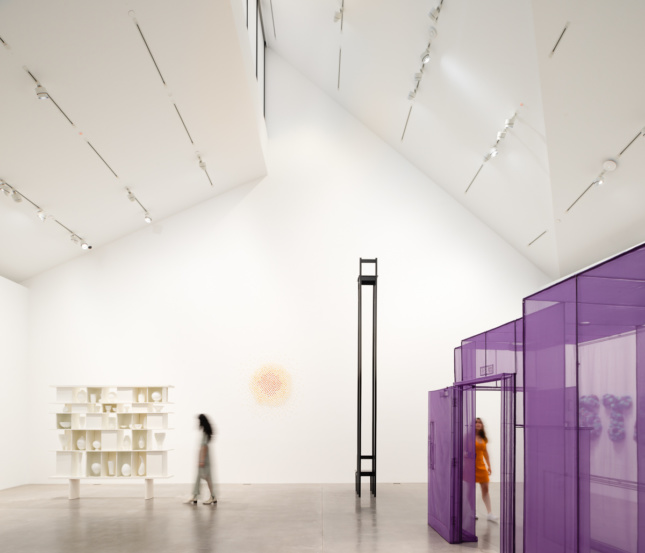
There are now 900 drawings, paintings, videos, and mixed-media pieces in Ruby City’s collection, as the Linda Pace Foundation has combined its holdings with Pace’s personal acquisitions. Exhibitions will draw only from the permanent collection, and will likely rotate every two years, with the kickoff show, Waking Dream, presenting a twisted take on domesticity from international and local artists from the building’s opening on October 13 through 2022. Combined with strategic views of Chris Park, a one-acre landscape of palm trees and bamboo groves down the street that is dedicated to Pace’s late son, from the double-height side corridor before entering the galleries proper, there’s enough discovery in both the art and the building to keep visitors coming back. In the end, the gestures add up, turning what could be a simple experience into something more multifaceted.






